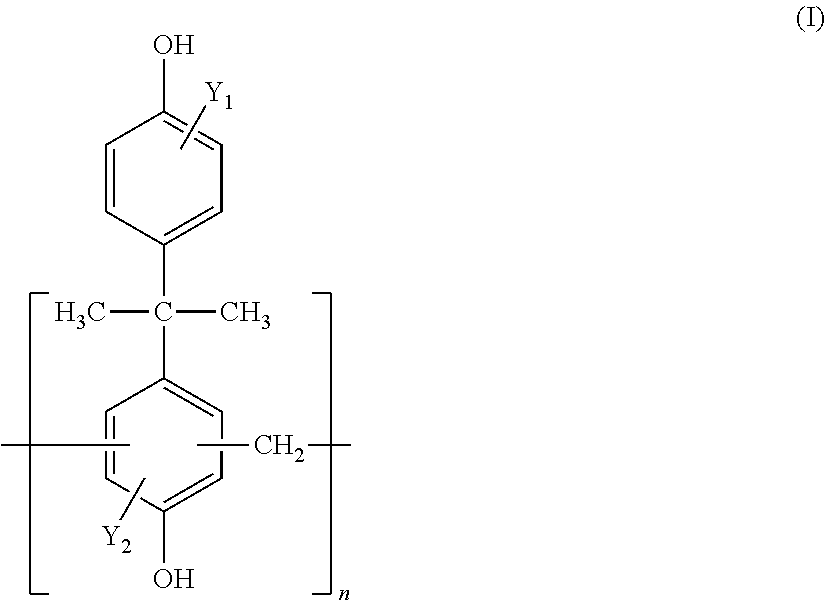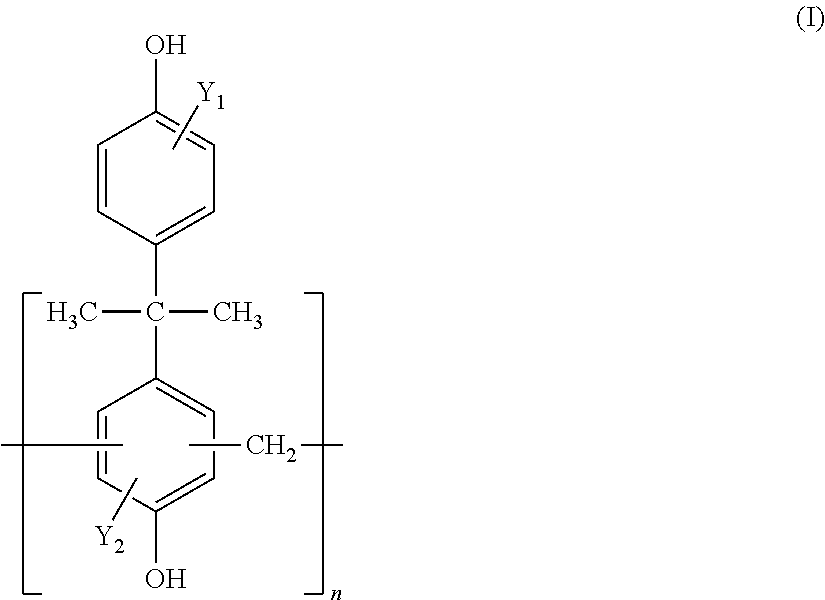Surface treatment liquid for zinc or zinc alloy coated steel sheet, zinc or zinc alloy-coated steel sheet, and method for manufacturing the same
- Summary
- Abstract
- Description
- Claims
- Application Information
AI Technical Summary
Benefits of technology
Problems solved by technology
Method used
Image
Examples
example
[0106]A resin compound (A) shown in Tables 1 (Table la and Table lb), a cationic urethane resin emulsion (B) shown in Table 2, a silane coupling agent (C) shown in Table 3, a titanium compound (D) shown in Table 4, a vanadium compound (E) shown in Table 5, a molybdate compound (F) shown in Table 6, a fluorine compound (G) shown in Table 7, and a wax (W) emulsion shown in Table 8 were mixed as appropriate to prepare a surface treatment liquid. As a material sheet, a galvanized steel sheet shown in Table 9 was used.
[0107]For example, a surface treatment liquid of each example was prepared to have a composition shown in Tables 10-1 to 12-1. The pH of each agent was adjusted using acetic acid and ammonia to pH shown in Tables 10-2 to 12-2, and prepared to have a solid mass content concentration of 10 mass % after drying at 110° C. for two hours by means of deionized water. The pH of other surface treatment liquids was also adjusted using acetic acid as an acid portion and ammonia as an ...
PUM
| Property | Measurement | Unit |
|---|---|---|
| Temperature | aaaaa | aaaaa |
| Temperature | aaaaa | aaaaa |
| Temperature | aaaaa | aaaaa |
Abstract
Description
Claims
Application Information
 Login to View More
Login to View More - R&D
- Intellectual Property
- Life Sciences
- Materials
- Tech Scout
- Unparalleled Data Quality
- Higher Quality Content
- 60% Fewer Hallucinations
Browse by: Latest US Patents, China's latest patents, Technical Efficacy Thesaurus, Application Domain, Technology Topic, Popular Technical Reports.
© 2025 PatSnap. All rights reserved.Legal|Privacy policy|Modern Slavery Act Transparency Statement|Sitemap|About US| Contact US: help@patsnap.com



